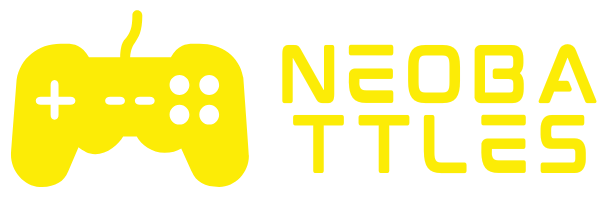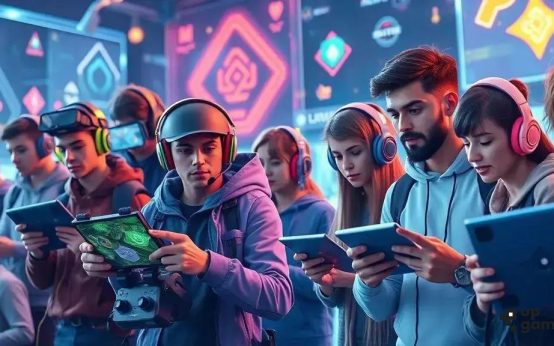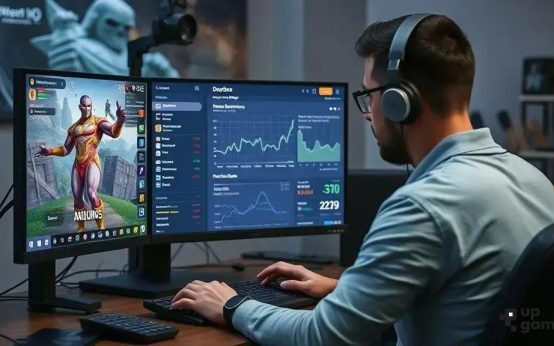Advanced strategies for competitive FPS players involve mastering game mechanics, map control, aim improvement, effective communication, and adapting tactics to different opponents to gain a decisive edge and consistently outperform rivals.
Have you ever wondered how top gamers stay ahead? Advanced strategies for competitive FPS players can dramatically shift your gameplay, unlocking new levels of precision and teamwork. Let’s dive into some tactics that might just change how you play.
Understanding game mechanics deeply
Understanding game mechanics deeply is essential for any competitive FPS player aiming to improve. Game mechanics include the rules, physics, and systems that govern how the game operates. Knowing how weapons behave, how movement affects accuracy, and the impact of different in-game elements can greatly enhance your decision-making.
Weapon recoil and spread patterns influence how you aim and control your shots. Practicing these mechanics allows you to predict bullet trajectories and minimize errors. Additionally, mastering the game’s movement system, such as strafing and crouching, can help increase your chances of survival and hitting targets.
Game mechanics also involve understanding cooldowns, reload times, and how each character or class functions in team-based FPS games. By understanding these elements deeply, you can optimize your playstyle to exploit your strengths and your opponents’ weaknesses.
Familiarity with maps and the physics behind grenades or equipment usage offers a tactical edge. When you grasp these fundamentals, you gain an advantage beyond pure reflexes, enabling smarter plays and strategic positioning.
Mastering map control and positioning
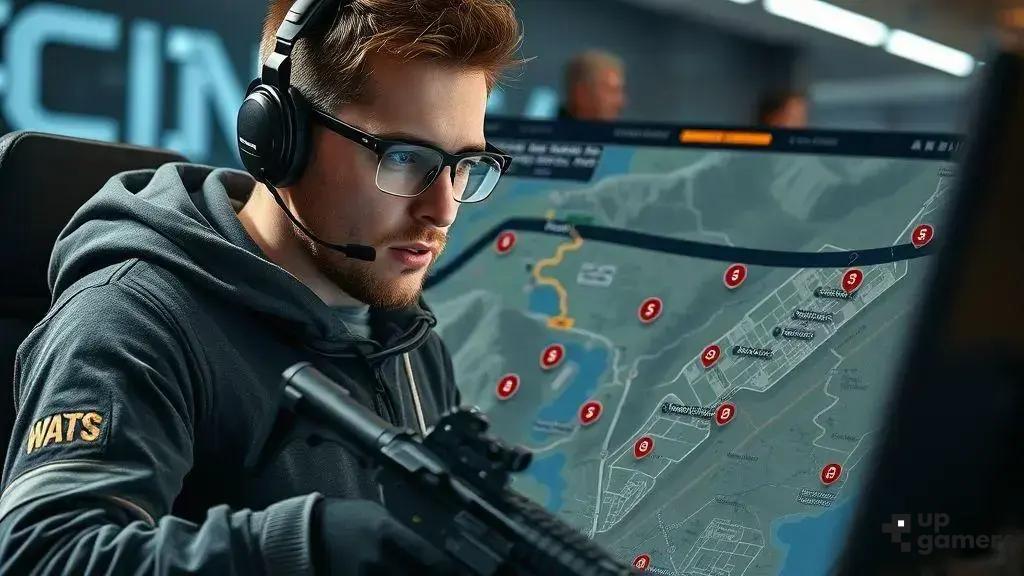
Mastering map control and positioning is key to gaining the upper hand in competitive FPS games. Knowing which areas of the map offer strategic advantages allows you to anticipate enemy movements and control the flow of the battle.
Map control involves securing important zones such as choke points, high ground, and objective locations. Holding these areas limits your opponent’s options and creates opportunities for your team.
Positioning is about placing yourself where you can maximize your impact while minimizing risk. Proper positioning means using cover effectively, maintaining sightlines, and avoiding open spaces where you are vulnerable. It also includes knowing when to rotate to new positions to surprise enemies or support teammates.
Communicating with your team about areas that need reinforcement and sharing enemy positions increases map dominance. Strong map knowledge helps you predict common enemy paths and prepare ambushes or take safer routes.
Combining map control with smart positioning improves your survivability and damage output, making it difficult for opponents to counter your tactics. Practice and experience are crucial to mastering this skill and turning the tide of your matches.
Improving aim and reaction times
Improving aim and reaction times is vital for excelling in any competitive FPS game. These skills determine your ability to quickly and accurately hit targets, often deciding the outcome of engagements before they happen.
Consistent practice with aiming drills helps build muscle memory, allowing your hands to react swiftly without conscious thought. Tools like aim trainers simulate different scenarios to sharpen precision and speed.
Beyond raw aiming, reaction time depends on your mental alertness and game awareness. Staying focused and anticipating enemy moves lets you respond faster to threats. Proper warm-up routines before matches prepare your mind and body for peak performance.
Adjusting your game settings, such as sensitivity and crosshair placement, can enhance your aiming comfort and accuracy. Keep your crosshair at head level and learn to track moving targets smoothly.
Combining improved aim with quick reactions gives you a clear advantage, helping you win gunfights more consistently and dominate competitive matches.
Utilizing communication and teamwork effectively
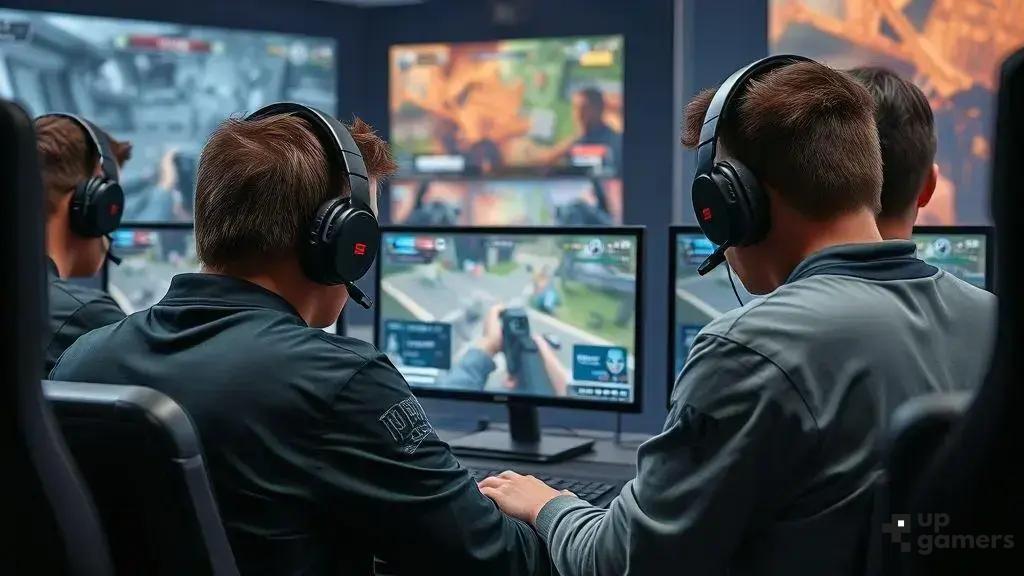
Effective communication and teamwork are crucial for success in competitive FPS games. Sharing real-time information helps your team make quick decisions and coordinate attacks or defenses smoothly.
Clear and concise communication ensures that vital information, like enemy positions and strategies, reaches teammates without confusion. Using callouts based on map landmarks helps everyone understand locations instantly.
Teamwork involves trusting your teammates and working together to accomplish objectives. Supporting each other by covering angles, providing backup, and coordinating utility usage can turn the tide of a match.
Adapting your communication style to your team’s needs, like using voice chat for fast coordination or pings for silent alerts, boosts efficiency. Regularly reviewing game footage as a team can improve strategies and fix mistakes.
Strong communication coupled with teamwork fosters a positive environment where players can focus, adapt, and outplay opponents consistently.
Adapting strategies to different opponents
Adapting strategies to different opponents in competitive FPS games is a skill that separates average players from top performers. Each opponent has a unique playstyle, strengths, and weaknesses that you can exploit.
Observing enemy behavior early in the match gives valuable insights. Notice if they play aggressively, camp, or rely on specific weapons. This knowledge helps you tailor your approach.
Countering aggressive players might mean playing more defensively, holding angles, and avoiding unnecessary fights. Against campers, use utility and movement to flush them out of hiding spots. When facing skilled aimers, focus on unpredictable strategies and teamwork.
Switching roles and adjusting your loadout based on the opponent’s tactics increases your flexibility. Communicating these changes to your team ensures everyone adapts effectively.
Remember, flexibility is key: sticking rigidly to one style can make you predictable and vulnerable. Continuously learning from each enemy type sharpens your overall game sense and prepares you for varied competitive environments.
Final thoughts on advanced strategies for competitive FPS players
Mastering advanced strategies can greatly improve your performance and enjoyment in competitive FPS games. By understanding game mechanics, controlling the map, improving aim, communicating effectively, and adapting to opponents, you become a more versatile and skilled player.
These skills take time to develop, so stay patient and practice consistently. The more you apply these concepts, the more natural they will feel during gameplay.
Remember, gaming is not just about reflexes but also about smart decisions and teamwork. Embrace these strategies to boost your gameplay and compete at higher levels.
FAQ – Advanced Strategies for Competitive FPS Players
Why is understanding game mechanics important for FPS players?
Understanding game mechanics helps you predict outcomes and make smarter decisions, improving your accuracy and survival in the game.
How can map control improve my gameplay?
Controlling key areas of the map limits enemy movement and gives your team strategic advantages, helping secure wins.
What are effective ways to improve aim and reaction times?
Regular practice with aim trainers, proper warm-ups, and adjusting sensitivity settings can boost your aiming skills and reaction speed.
Why is communication vital in team-based FPS games?
Clear communication allows your team to share important info, coordinate strategies, and respond quickly to threats for better teamwork.
How do I adapt my strategies to different opponents?
Observe your opponents’ playstyles and adjust your tactics accordingly, whether that means playing defensively, being more aggressive, or changing your loadout.
What role does teamwork play in competitive FPS games?
Teamwork ensures support and coordination, allowing your team to execute strategies effectively and increase your chances of victory.

